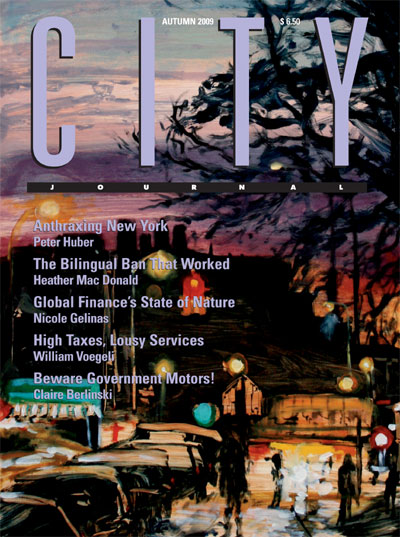Environmental groups’ view of the animal world sometimes resembles Disney’s Bambi, with owls and rabbits mingling peacefully and Man lurking as the only predator, aided by his evil servant the hunting dog. A good example is the National Wildlife Federation, which wants to reintroduce wild animals into the suburban and urban enclaves from which development has expelled them by encouraging homeowners to develop “healthy and sustainable wildlife habitats” on their properties. The NWF has even produced a television program—Backyard Habitat, shown on Animal Planet—in which experts advise homeowners in places like Chicago about how to attract animals with plants they can feed on, freshwater, and places of cover like high grasses. The show especially likes to visit families with small children, emphasizing that such habitats can teach kids about wild animals.
But somehow missing from the program is one of Nature’s basic principles: the idea that hunters and the hunted evolve together. My own New Jersey backyard, a rich feeding environment that draws small herbivores with its tasty plants, dense underbrush, and drinking sources, illustrates how a residential habitat gradually becomes a killing field—in our case, one where stray cats battle over hunting turf, predatory birds dive to scoop up breakfast, and my wife and I scramble to clean up carcasses before our daughter sees them.
One of our backyard’s deadliest killers is the feral cat, which is spreading rapidly because Americans provide ferals with such good hunting grounds. In North America, these cats kill some 100 million birds yearly, experts say. Add to the feral the house cat that runs free—which also kills with abandon, because we’ve yet to breed the predatory instinct out of domestic cats, even after 9,000 years—and you have a backyard running red with blood. On any given day, I may see a cat trotting down my driveway with a chipmunk in its mouth, or one crouched in the high grass ready to pounce on a baby bird that has fallen out of its nest. Cats have methodically slaughtered successive generations of bunnies born on our property until finally getting the parents, too. Either that, or mom and dad rabbit wised up and moved elsewhere.
Birds of prey are more efficient and tidier hunters than cats. We live near a small wooded enclave that, because of its geological features, was once home to eagles. They’re long gone (thankfully, considering what fearsome predators they are), but the landscape still attracts small hawks, which patrol endlessly overhead. Only recently, I watched one swoop down and land with a thud on the grass, where I could see that it had something small, gray, and alive in its talons. The hawk then took off, wobbling at first but then gliding elegantly away. Seeing that performance made me regret that our hawks aren’t big enough to grab cats: that would solve the feral problem.
Small animals also have to contest for resources with larger prey species, which we attract as we make our yards more delectable. Somehow wild turkeys, apparently traveling great distances over local golf courses, adjoining parks, and even busy streets, have discovered our property. At first they came with abandon, in broad daylight, until I read that dogs intimidate them, and so I unleashed our two 70-pound mixed-breed Labs on them and discovered how fast a turkey can trot. Since then, however, the turkeys don’t show up until late at night, when the dogs are in the house. Whoever said turkeys were stupid?
Now that bigger prey are frequenting my backyard, I worry that bigger predators will soon follow. Coyotes have become more common in cities and suburbs, and black bears, whose population is swelling in western New Jersey, have already traveled farther east than our house. Our dogs’ growing unease suggests that something fierce has already arrived. At night, the dogs patrol our yard’s perimeter restlessly, acting more like Dobermans than Labs, and growl menacingly, as I’ve never heard them do before, into the darkness beyond our fence.
It’s enough to make me want to pave the backyard.
